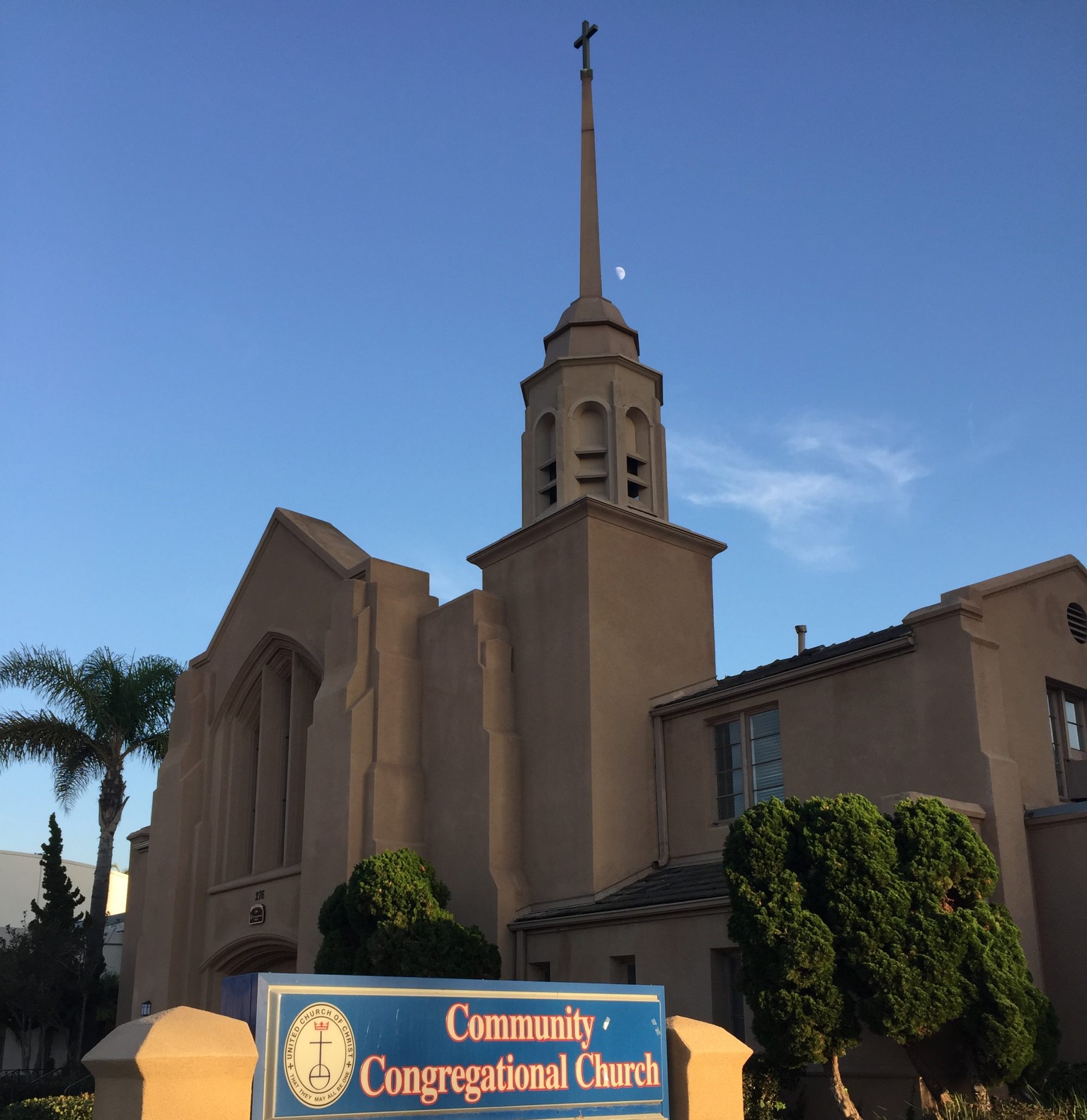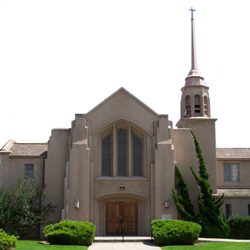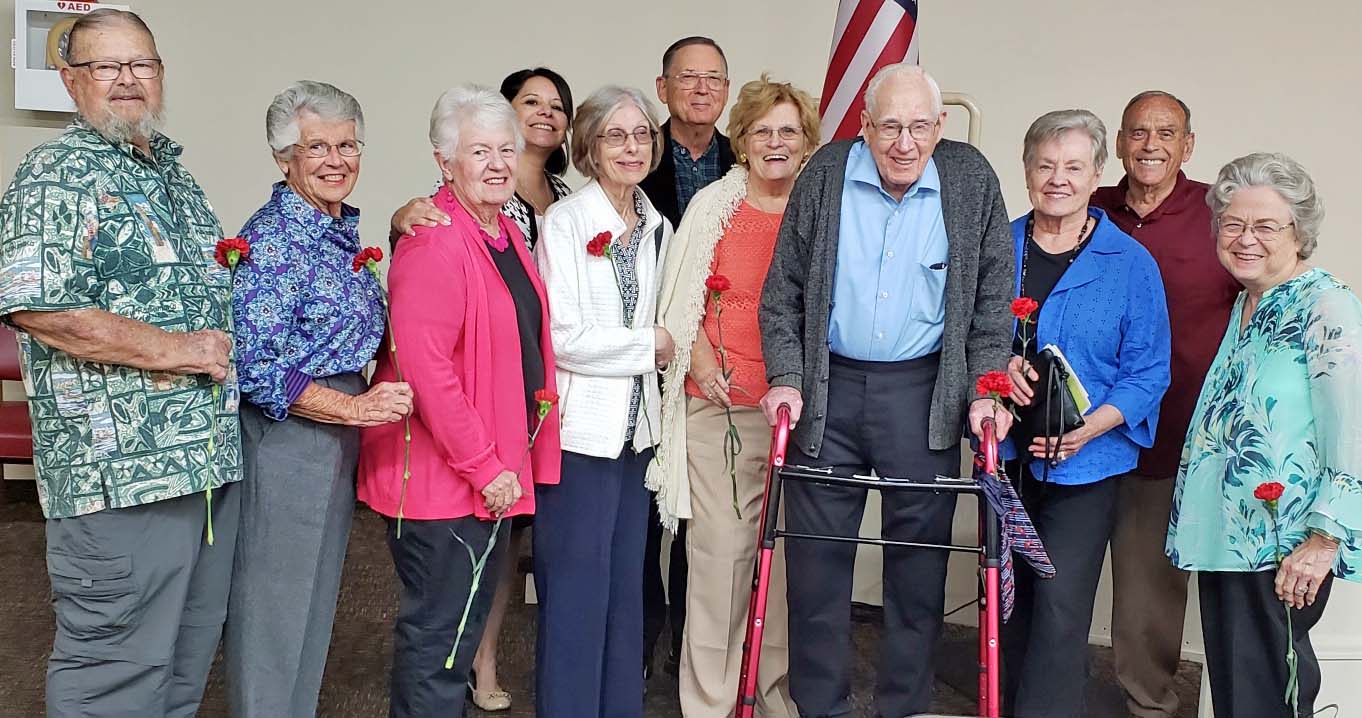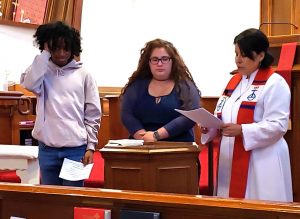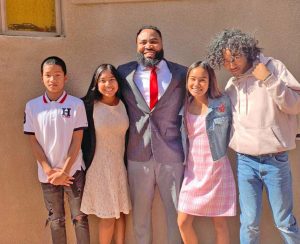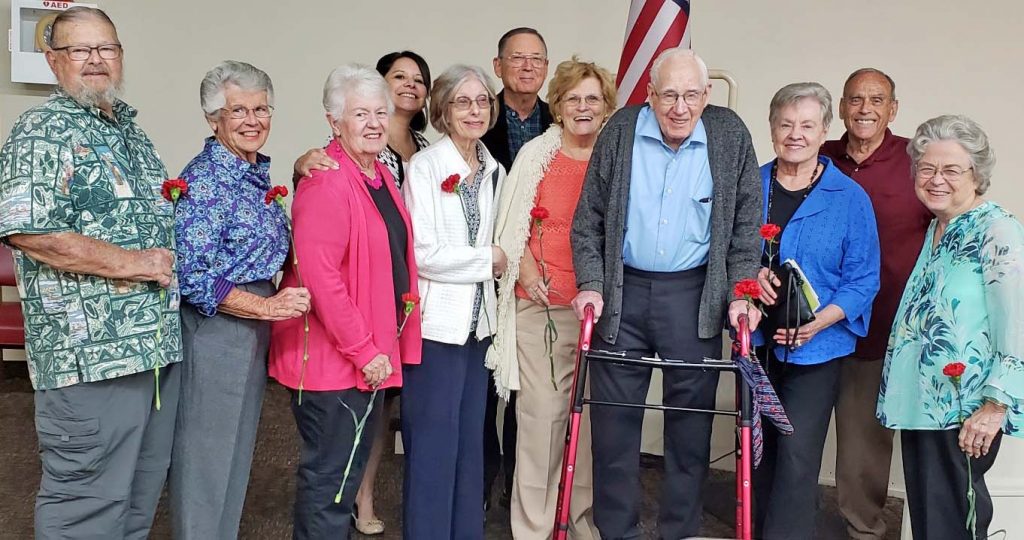
2019-11-3 “Placing Our Trust in God”
Communion Meditation for Nov. 3, 2019
Month of Stewardship, Week Two
“Placing Our Trust in God”
Matthew 6: 24-33
Rev. Liz Aguilar
Community Congregational Church of Chula Vista, UCC
Matthew 6:24-34 New Revised Standard Version (NRSV)
24 “No one can serve two masters; for a slave will either hate the one and love the other or be devoted to the one and despise the other. You cannot serve God and wealth.
25 “Therefore I tell you, do not worry about your life, what you will eat or what you will drink, or about your body, what you will wear. Is not life more than food, and the body more than clothing? 26 Look at the birds of the air; they neither sow nor reap nor gather into barns, and yet your heavenly Father feeds them. Are you not of more value than they? 27 And can any of you by worrying add a single hour to your span of life? 28 And why do you worry about clothing? Consider the lilies of the field, how they grow; they neither toil nor spin, 29 yet I tell you, even Solomon in all his glory was not clothed like one of these. 30 But if God so clothes the grass of the field, which is alive today and tomorrow is thrown into the oven, will he not much more clothe you—you of little faith? 31 Therefore do not worry, saying, ‘What will we eat?’ or ‘What will we drink?’ or ‘What will we wear?’ 32 For it is the Gentiles who strive for all these things; and indeed your heavenly Father knows that you need all these things. 33 But strive first for the kingdom of God and his righteousness, and all these things will be given to you as well.
There are many reasons why I love Jesus. Someone once said, and I believe it was theologian, Dallas Willard who said it- that Jesus was the smartest man that ever lived. I agree. But not only was Jesus the smartest man that ever lived, he was also the wisest and most practical as well. He loved generously, was compassionate, caring, forgiving, radically embracing of those considered to be unclean and sinful. Jesus was awesome!
Those are just some of the reasons why I love Jesus. Today’s scripture passage points to Jesus’ wisdom and practicality. Also to His compassion for others.
This is our second week into a month of sermons focusing on the teachings that Jesus shared regarding money. To remind you of why I chose to focus on His teachings this month is to remind all of us that the topic that Jesus taught about the most was actually about money. Therefore, it must have been a pretty important topic to Jesus.
But why? Was it because he was about selling some phony “make yourself rich” scheme? Was it because he thought money was THEE most important thing in the world? No, it was because He knew that we needed to keep it in its rightful place. We needed to put it in right perspective.
In today’s scripture portion we have some of Jesus’s most famous sayings. Some of these verses must have sounded very familiar to you. Therefore, if we were to set each verse apart, we could easily spend a whole sermon on each verse. However, today I want us to look at these verses as one whole periscope/ one whole portion, that weaves itself into one main point.
And what is that point? Simply- that we must trust God. NOT putting our total trust in God means that we WILL worry about every else. It means that we WILL make money to be the most important thing in our lives. It WILL also become what we worship the most; what defines us, what keeps us up at night, and what eventually can enslave us.
Jesus knew what the most important commandment was, which was to love God with ALL of our hearts, minds, souls. And then to love others as we love ourselves. Therefore, He understood that putting anything above God would not bring us true happiness and joy. And remember, Jesus wanted us to live abundant, joyful lives.
In this scripture portion, Jesus first tells us not to be anxious, and then provides the rationale:
- God provides for the sparrow, who works but does not worry.
- God, who gave us life, will provide for our needs.
- Our worry is futile; it does not accomplish anything.
- God clothes the flowers beautifully, even though they are of minor importance compared with humans—God’s sons and daughters created in God’s image. Jesus argues from lesser to greater—a common type of reasoning among the Jews of his day.
So, was Jesus saying to me and to others who are not poor like me, don’t worry be happy because after all you don’t HAVE to worry?
No, not at all. Jesus was not wealthy himself. Nor were his disciples. Jesus had been a carpenter. Some of the disciples would have made decent lives working as tax collectors and/or successful fishermen. And yet, they left everything to follow Jesus.
Jesus was reminding those around him then and us today- that no matter what your station is in life you and I must place worship to God first. When we don’t, we allow worries including our worries about money, consume us.
Now, Jesus isn’t saying, that we shouldn’t care at all and be irresponsible with what we have. No. He was saying that we need to put God first. TRUST God first. Trust that God WILL provide for all of our needs.
There were indeed times when I was not sure how I would pay my rent or my tuition bill. My parents did not pay for my undergraduate degree or graduate degree, after all.
There were times I lived on rice and beans and canned soups. But, I can tell you that despite not having money I was fine and I knew I would be fine later on.
Did I worry, yes. BUT, I never allowed the worry to consume me.
Do I get anxious now- yes. I am human. We all do. However, those of us who put God FIRST and therefore place our full TRUST in God know that when we lack something it does not mean that we will always be lacking. It does not mean that God has abandoned us.
God has proven to you and to me that God is FAITHFUL. That no matter how much we may doubt God, no matter how many times we forget that the God we worship and serve is an all-loving, all generous God- that nothing can or will stop God from providing for our needs. Ever!
Therefore, when we take a step back and look at our lives from the perspective of placing our faith IN God, it is then when we no longer need to fear as much.
It is then, when we can also understand that we can indeed give God the portion that corresponds to God in the offering plate. We can indeed give to the poor and needy. We can indeed go to sleep knowing that God will give us the means and the ways to pay our bills.
I once had a professor who used to tease us students and remind us that while we may wonder how we can pay for tuition or how we can put money in the offering plate that somehow when it was time to go to the movies or go on a date- somehow, we always found the money.
Our decisions about how we spend money follows what we find to be of most importance. Sometimes it is the basics- like food and shelter. However, sometimes what we consider to be essential just isn’t.
Jesus was, indeed, the smartest person that ever lived and he knew that we must put God first and in doing so, everything else would follow. Seek ye first the kingdom of God and All His righteousness WILL follow.”
As we approach the communion table. May we re-commit ourselves to placing our complete trust in God. May we give God those things that we worry about the most- whether it is about money or about a strained relationship or even our health.
God IS worthy of our trust and of our praise. May we continue to grow in trust and love for God and for one another every day. Amen.
2019-10-20 “Choosing Christ”
Confirmation Sunday
October 20, 2019
Ephesians 1:1-6; 13-14
“Choosing Christ”
Ephesians 1-6 New Revised Standard Version (NRSV)
1 Paul, an apostle of Christ Jesus by the will of God, To the saints who are in Ephesus and are faithful[a] in Christ Jesus: 2 Grace to you and peace from God our Father and the Lord Jesus Christ. 3 Blessed be the God and Father of our Lord Jesus Christ, who has blessed us in Christ with every spiritual blessing in the heavenly places, 4 just as he chose us in Christ[b] before the foundation of the world to be holy and blameless before him in love. 5 He destined us for adoption as his children through Jesus Christ, according to the good pleasure of his will, 6 to the praise of his glorious grace that he freely bestowed on us in the Beloved.
13 In him you also, when you had heard the word of truth, the gospel of your salvation, and had believed in him, were marked with the seal of the promised Holy Spirit; 14 this[d] is the pledge of our inheritance toward redemption as God’s own people, to the praise of his glory.
Friends- today is the last Sunday in our Acts series. Some of you may be happy about that. Its been a good run, sort to speak. Next week we begin a new series on the teachings of Jesus regarding money, spending, and sharing. We do so as we launch our Stewardship month.
But, today, I would like to recap a bit on what we learned from our sermon series on Acts. For those of you who have been here most of the summer and early Fall, what would you say you learned from these scripture verses we looked at together?
Some of the highlights which I learned were the following:
Christian community is important. Sharing generously among the community is most important. (Remember the scirptures that read about how they literally shared “all things in common; food, clothing, sold land to share the proceeds among one another?
Then, we also learned about having authentic relationships, didn’t we? The early church was not perfect. They had power dynamics and arguments among themselves. The leaders attempted to settle matters as best as they could. But there was growing pains for that early church. The good news is that although it was difficult, they survived. We know this because here WE are, after all!
Now, we also learned that some leaders never saw eye to eye and instead wen their own ways. The good news there is that the Gospel was able to go to various parts of the world because of that splitting off that occurred. This reminds me that when people want to serve, they do so, no matter what obstacles comes their way b/c God wants us to spread God’s good news of love and redemption.
Thirdly- we learned about the radical acceptance and love that the early Christians demonstrated. Remember some had a Jewish background, while others did not. Some knew and lived out their Jewish customs and laws to the T, while the other non-Jews weren’t even familiar with those laws. The good news was that they all decided to accept one another and not make distinctions among each other. What was most important through out Acts and the activities of the leaders was that the simple message of Jesus’ life and sacrifice was most central.
This brings us to today. Today, we read from one of Paul’s letter, to the Ephesians. Notice the love that we hear as he addresses this beloved community. Notice too the language about adoption and belonging. Then, notice that Paul highlights that they not only belong to one another but most importantly, they have been “marked with the seal of Christ.” Hear these last verses again. (From verse 13-14) “In him you also, when you had heard the word of truth, the gospel of your salvation, and had believed in him, were marked with the seal of the promised Holy Spirit; 14 this is the pledge of our inheritance toward redemption as God’s own people, to the praise of his glory.”
Thus, Paul is reminding his church in Ephesus that hearing and BELIEVING God’s truth through scripture and the Gospel of Christ will bring salvation. Not only that- they will be marked by a seal of the promise of the Holy Spirit.
What does all that mean? It means that at the center of our life and belief system as Christians is indeed the word of God. That we are indeed saved by Christ and that by accepting these truths we do belong to the Holy spirit and to on another.
Today, we will celebrate two baptisms and the confirmation of these young people. This scripture indeed reminds them and hopefully all of us that we do belong to God when we chose Christ. And as we choose Christ, we then belong to one another through the power of the Holy Spirit. Thus, the words of Paul remind us this morning that belonging to a COMMUNITY of FAITH through by believing in God’s holy Word and believing in Christ’s love for us is indeed what brings us salvation.
Today, these young people will choose to follow Christ. Some will live some of that out here. Others will move on to other churches and other cities.
Yet, it is this community in turn that says, back to them, you are indeed a part of this beloved community. You indeed matter to God and you indeed matter to us.
Last week when I met with these confirmands I said (after saying many things) that at the end of everything what exists in a community of faith is love. Christ loved us first so that we may then love one another.
Let us celebrate God’s love by continuing to be beloved community, a community that chooses Jesus over an over again. Amen.
Confirmation – October 20, 2019
2019-10-13 “A Good Good-bye”
Sermon for October 13, 2019
“A Good Good-bye”
Acts 20:17-25, 35- 38
Have you ever had to say a difficult good-bye to someone? Perhaps it is was a loved one, who was close to dying? Perhaps it was a boyfriend or a girlfriend? Perhaps it was a group of co-workers? Perhaps it was wonderful neighbors? Or classmates after graduation? Perhaps it was a church or other beloved community? How did you say good-bye, and did you feel like you said a good, good-bye?
Well, believe it or not, this lengthy scripture portion of Acts which Chris just read for us, is a description of the Apostle Paul’s good, good-bye to one of his beloved churches- the church of Ephesus.
Now, we know from having read his letter to the Ephesians, that he indeed loved this community of believers. And in today’s portion of Acts, we are given a glimpse into Paul’s love and affection for them.
I am hoping that be reading this part of Acts we can learn something about the way we can and should say our own good, good-byes.
But, why? Why would a good, good-bye be important to do, to begin with? Aren’t we meant to be people who feel joy and show joy all the time? Aren’t we supposed to be “happy Christians?”
Yes, and no. Of course, I do believe that the source of great joy does come from God. The “joy of the Lord is our strength” after all, as the prophet Nehemiah stated in chapter 8, verse 10. However, we cannot be people who fake being happy when we are not. We know, too that just because you feel great sadness does not mean that you are not joyful in the Lord. You can still sense God’s joy in you, despite of, and, in the midst of, your pain of loss and grief.
I remember when I took my first class on loss. It was called, “recovery from bereavement.” I had not experienced any great losses, yet, or so I thought. I heard my classmates speak about their losses of a parent, of a spouse or even a child.
It wasn’t until later that we learned from the books we read and the lectures that we heard that the most common experience that humans share is that of loss.
Think about it, (as my professor shared) all of us experience some kind of loss, at some point of our lives. Whether it is the move to another school, a new city, a new job, the letting go of a relationship you had formed at those places… The loss of a home you loved or a pet that you cared for so much. All of it are losses and the experience we feel about those losses are real and painful.
Although, we can be a society that tends to place most importance on “feeling great” and feeling good and finding value on what-ever or whomever is young and healthy… On those things that give us moments of happiness or escape. We are made to believe that the more material things we acquire, the happier we will be; the more power we gain or professional advancement we achieve, the happier we will be… The more we dispose of- whether it be friends or lovers, the happier we will be because if we do not form any real attachments then we will never have to feel loss or pain once they leave us.
But, let’s go back to the scripture reading of today. Now, we do know that Paul did in fact go about planting faith communities from city to city, from region to region. At this point in the book of Acts, the early Church was indeed growing in leaps and bounds. And, his message was clear: that there had been a man named Jesus of Nazareth and that he had died and had lived and had done so to forgive the sins of others. People had never heard of such a person. They may have heard of a promise of a Messiah (f their background was Jewish) but otherwise, they wouldn’t have heard of a person such as this selfless, leader and savior- Jesus the Christ.
But, think about it- Paul could have just formed a faith community and have stayed in one. He didn’t have to keep moving from place to place. Why? Because he was single. He wasn’t the typical man who would have had a wife and children. He could have found comfort and security in the faith community he had nurtured.
Instead, he moved from place to place and did so knowing the real risks of sharing his message and of being imprisoned and killed for it. But none of that stopped him. So then, in this portion of Acts we read about how he was saying good-bye to his beloved community in Ephesus. He is wishing them well. He is reminding them of what he had taught them. And in the end of his speech we read that, ‘there was much weeping among them all, they embraced Paul and kissed him, grieving especially because of what he had said, that they would not see him again.”
You see, Paul didn’t just plant churches and move on to the next one with out a good good-bye. Instead, he explained why he had to leave, what he had done with and for them and indeed showed true emotion and sadness at his departure. In other words, he didn’t ignore the difficulty of letting go but instead, addressed it and acknowledged it.
My own theory is that in doing so, that was really the only way he could go on to embrace a new community- minister among them, and plant yet other churches. He had to say a good, good-bye, in order to say a new hello.
This makes sense to me. As a person who has had to move from one city to the next; from one ministry to another, I understand the importance of saying good- bye so that I may say a good “hello” to a new place. As each new community of faith has indeed needed and has been deserving of my full attention.
Additionally, we know that there are no short cuts to grief. We know it will take the time that it needs to, that it will shape us and change us. That the pain will be real and will be great. And so we fear it and put it off as much as possible, mistakenly believing that if we do not look at the grief that it will not exist.
At times, we may even not allow God to enter into the pain of letting go because we fear the pain, itself. And yet, God can be trusted of course, with our most intimate kind of pain. The famous theologian, whom I often quote from, Henri Nouwen, wrote this- “Our inclination is to show our Lord only what we feel comfortable with. But the more we dare to reveal our whole trembling self to him, the more we will be able to sense that his love, which is perfect love, casts out all fears.”
So, here is the thing- loss is real and is indeed common. Although we do not talk about it as a society, it is there, nevertheless; shaping and molding us. However, even though it is a common experience we do not need to experience it alone. We do not have to fear it or ignore it but walk into it. Live in it, in order to move past it.
Does it ever go away? No. I miss my dad every day. And now I will miss my grandmother, too. I miss every community of faith I have left behind. I miss some relationships that were so significant to me that once they were no longer there, I wondered how I could live with out them. The pain, of loss, is indeed real and lasting. And yet, as we grieve them, their memory stays with us and their love for us and ours for them, never dies. That is the beauty of our losses. That person or community may no longer be physically with us but their love has a lasting affect on us all of our lives that never truly dies.
As we experience loss, we can also give thanks that we are not alone. Why, because we have the love and support of a faith community to help us journey through our grief. Not only that, we have the love of God that shows itself in the form of flowers, cards, hugs, mutual tears, loving gestures of others who reach out to us in our time of grief- all reminding us that we are not alone. Loss is a part of life. However, we can and should give our best good, good-byes, as possible. Amen.
